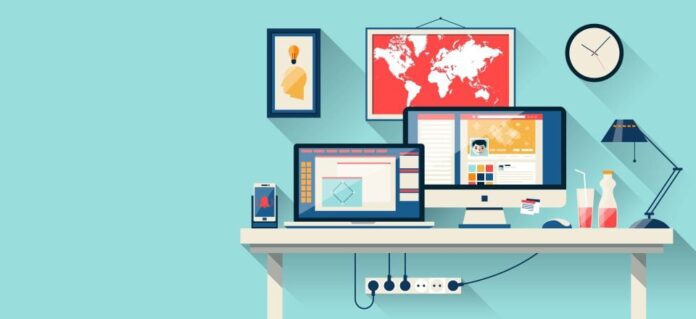Design is the intersection of creativity, functionality, and human experience. In 2025, design extends far beyond aesthetics — it shapes products, environments, digital interfaces, and even lifestyles.
From architecture and interior spaces to digital platforms and consumer products, design plays a pivotal role in how we interact with the world. The year 2025 highlights trends in sustainable, user-centered, and technology-driven design, emphasizing both beauty and purpose.
The Evolution of Design
Design has always mirrored cultural, technological, and societal shifts. Industrial design in the 20th century focused on mass production and functionality. The digital era brought user experience (UX) and interaction design to the forefront, emphasizing usability, accessibility, and engagement.
Today, design integrates sustainability, inclusivity, and innovation. Designers consider environmental impact, user needs, and long-term functionality alongside visual appeal. Design is no longer just about decoration; it is about solving problems, enhancing experiences, and influencing behavior.
Key Design Trends in 2025
- Sustainable and Eco-Friendly Design
Sustainability is a core driver in modern design. Eco-friendly materials, energy-efficient products, and recyclable components dominate the landscape. Designers focus on circular systems where products are durable, repairable, and adaptable.
In architecture, green buildings with renewable energy systems, natural ventilation, and sustainable materials are standard. In product design, biodegradable packaging, modular components, and upcycled materials reflect environmental consciousness.
- Minimalism and Functional Aesthetics
Minimalist design continues to thrive in 2025, emphasizing simplicity, clean lines, and functional elegance. Minimalism prioritizes purpose over excess, making spaces and products intuitive and user-friendly.
In interior design, open layouts, neutral color palettes, and multipurpose furniture enhance comfort and functionality. Digital interfaces adopt minimal layouts with streamlined navigation and reduced visual clutter, improving user experience.
- User-Centered and Inclusive Design
User experience (UX) is central to design in 2025. Designers prioritize accessibility, inclusivity, and personalization. Products and interfaces are developed for diverse audiences, considering age, physical ability, cultural context, and cognitive needs.
Inclusive design ensures that everyone, regardless of ability, can interact seamlessly with products, apps, and environments. Personalization technologies allow users to customize products, apps, and experiences, enhancing satisfaction and engagement.
- Biophilic Design and Nature Integration
Biophilic design, which integrates natural elements into spaces, is gaining momentum. Plants, natural lighting, organic textures, and sustainable materials create healthier, more calming environments.
This trend spans residential, commercial, and public spaces. Biophilic design improves mental well-being, productivity, and aesthetic appeal, connecting people to nature in increasingly urbanized environments.
- Technology-Driven and Smart Design
Technology shapes design in unprecedented ways. Smart devices, AI interfaces, and IoT integration influence product and environment design. Homes, offices, and cities are becoming intelligent, responsive, and adaptive to human needs.
In product design, 3D printing, augmented reality (AR), and virtual reality (VR) allow rapid prototyping, experimentation, and immersive user testing. Smart design ensures that technology enhances usability without compromising aesthetics.
Digital Design and the UX/UI Revolution
Digital design is evolving rapidly in 2025. User interfaces (UI) are intuitive, visually appealing, and adaptive to different devices. User experience (UX) is optimized through personalization, predictive analytics, and AI-driven recommendations.
Voice interfaces, gesture recognition, and AR/VR applications are becoming mainstream. Designers focus on reducing friction, increasing engagement, and creating seamless interactions across platforms. Mobile apps, websites, and software solutions now prioritize accessibility, speed, and emotional connection with users.
Trends in Product and Industrial Design
Product and industrial design in 2025 prioritize functionality, ergonomics, and aesthetics. Modular, multipurpose, and space-saving products cater to smaller living spaces and changing consumer lifestyles.
Materials innovation plays a key role. Biodegradable plastics, recycled metals, smart textiles, and adaptive materials allow designers to create products that are sustainable, durable, and visually striking. Wearable devices, consumer electronics, and household items all reflect a balance between form and function.
Architecture and Interior Design Innovations
Architecture and interior design are increasingly holistic, merging sustainability, technology, and aesthetics. Smart buildings feature energy-efficient systems, adaptive lighting, and responsive environments that adjust to human behavior.
Interior design embraces multipurpose furniture, modular layouts, and biophilic elements. Spaces are designed for well-being, productivity, and adaptability. Urban planning integrates green spaces, pedestrian-friendly zones, and eco-conscious materials, reflecting a growing emphasis on community and environmental stewardship.
Cultural Influence and Global Trends
Design in 2025 is deeply influenced by culture, history, and global connectivity. Designers draw inspiration from diverse traditions, blending local heritage with contemporary trends. African patterns, Asian craftsmanship, and European minimalism often converge in modern design projects.
Cultural sensitivity and authenticity are critical. Designers must respect local traditions while innovating for modern needs, creating products and spaces that are both meaningful and globally appealing.
Challenges in Modern Design
Despite advances, designers face challenges including:
- Resource scarcity and sustainability: Creating eco-friendly products while maintaining quality and affordability.
- Technological complexity: Integrating AI, IoT, and AR/VR into seamless designs.
- Market saturation: Standing out in a crowded global market of products and digital experiences.
- Consumer expectations: Meeting demands for both aesthetics and functionality without compromise.
The Future of Design
The future of design in 2025 and beyond emphasizes sustainability, technology, and human-centered innovation. AI-driven tools will enable predictive design, personalized experiences, and rapid prototyping. AR and VR will redefine product visualization and immersive spaces.
Sustainable practices will dominate across industries, with circular systems and eco-conscious materials becoming standard. Inclusive, functional, and culturally sensitive designs will create meaningful connections between products, spaces, and users.
Designers will increasingly collaborate across disciplines — blending architecture, product design, digital interfaces, and environmental science — to create holistic solutions that enhance lives while respecting the planet.
Conclusion
Design in 2025 is a dynamic fusion of creativity, technology, and human-centric principles. From sustainable products and smart homes to immersive digital experiences and culturally inspired spaces, design is shaping the way we live, work, and interact.
Innovation, functionality, and aesthetic excellence define modern design, ensuring that every product, interface, or space delivers value, usability, and inspiration. As designers continue to integrate technology, sustainability, and inclusivity, the future promises a world where design is not just seen, but experienced — enhancing lives and connecting humanity with purpose and beauty.
Source: Hot FM Online
